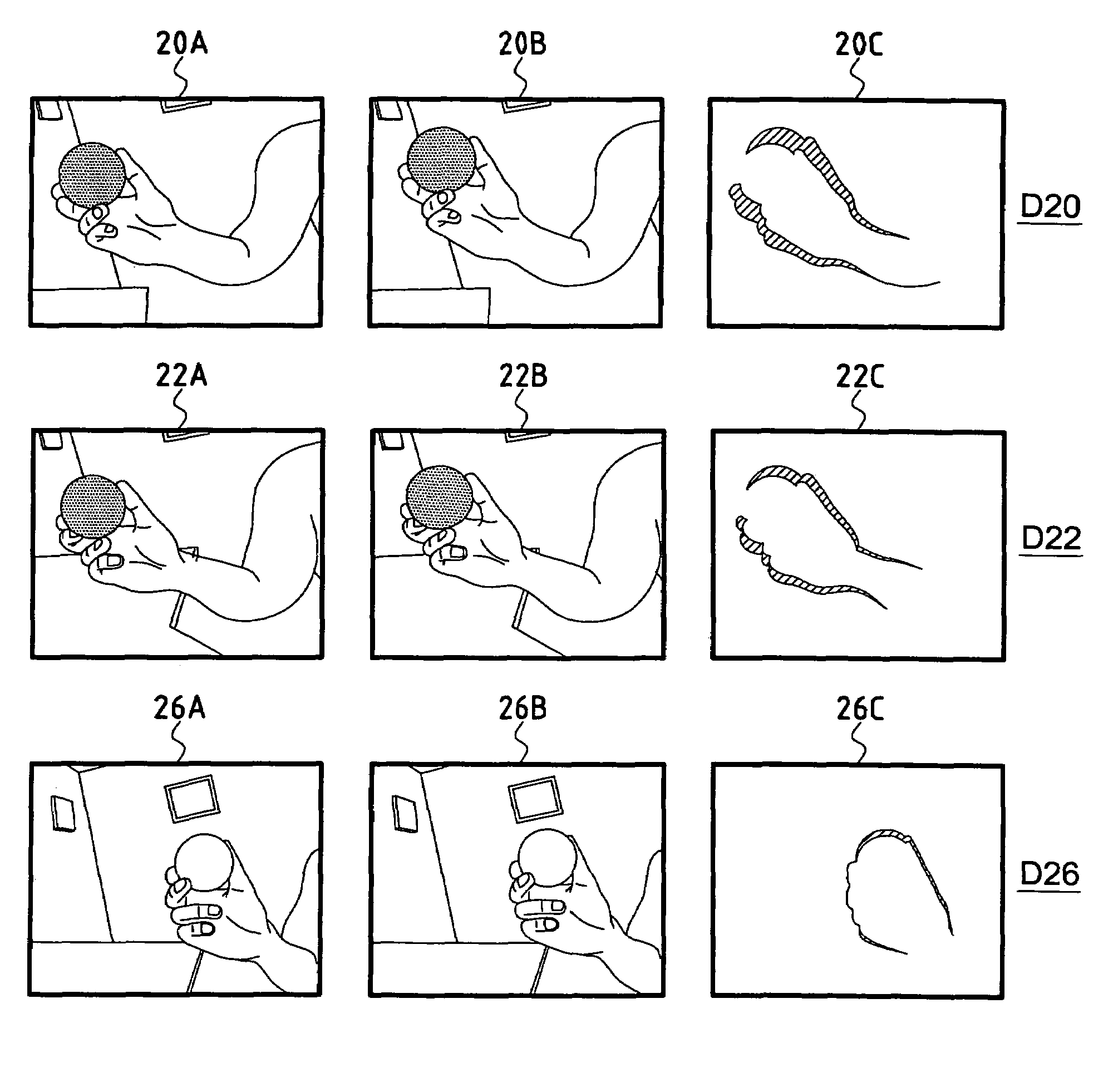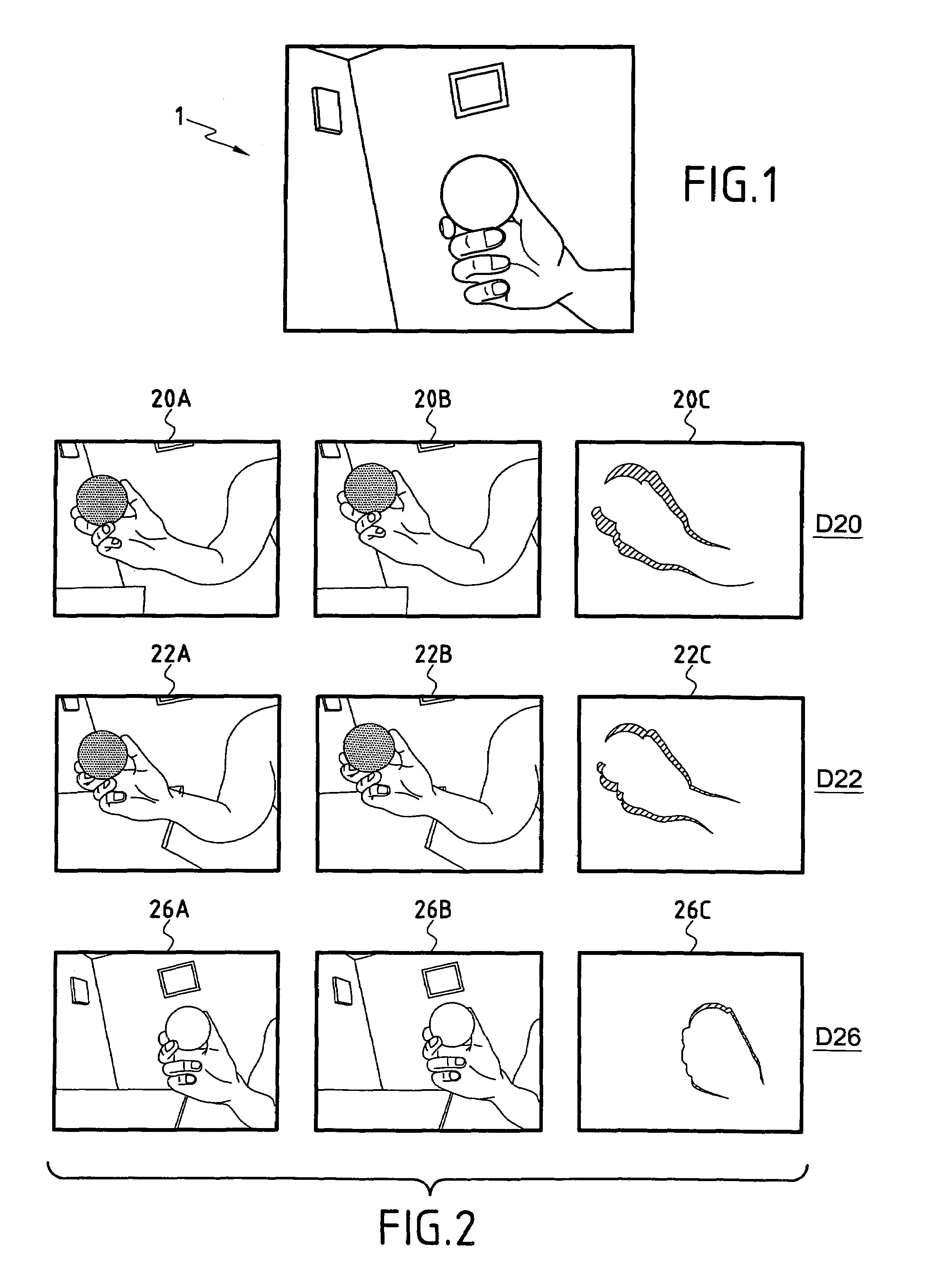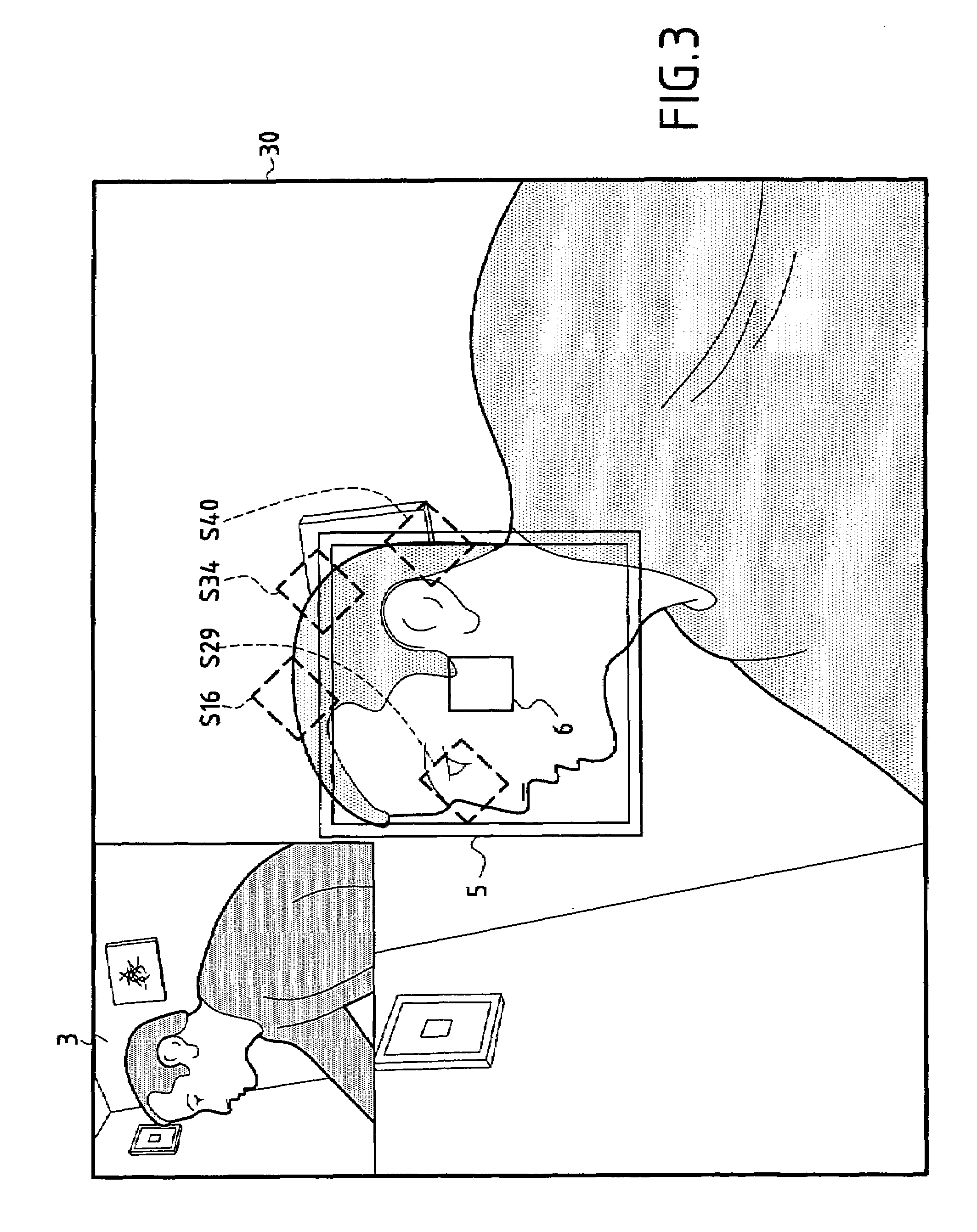Adaptive artificial vision method and system
- Summary
- Abstract
- Description
- Claims
- Application Information
AI Technical Summary
Benefits of technology
Problems solved by technology
Method used
Image
Examples
Embodiment Construction
[0049]The adaptive artificial vision system according to the invention is conceived in such a manner that it is capable of bootstrapping object and event recognition.
[0050]The method and system according to the invention start with very crude recognition capabilities. The system may be called impressionist since it is adapted to perceive patches which are elementary visual parts for describing dynamic or static events. A dynamic event is usually defined by a movement whereas a static event is defined by an object.
[0051]The patches are constructed by the system to describe its visual perception at the lowest level. As the system accumulates visual experiences, it attempts to integrate patches together in order to discover stable sets. This integration happens both in the time and the spatial domain. After a while, the system becomes capable of recognizing reoccuring movements. After reaching this stage, it tries to extract the structure of objects involved in the movements it detects...
PUM
 Login to View More
Login to View More Abstract
Description
Claims
Application Information
 Login to View More
Login to View More - R&D
- Intellectual Property
- Life Sciences
- Materials
- Tech Scout
- Unparalleled Data Quality
- Higher Quality Content
- 60% Fewer Hallucinations
Browse by: Latest US Patents, China's latest patents, Technical Efficacy Thesaurus, Application Domain, Technology Topic, Popular Technical Reports.
© 2025 PatSnap. All rights reserved.Legal|Privacy policy|Modern Slavery Act Transparency Statement|Sitemap|About US| Contact US: help@patsnap.com



